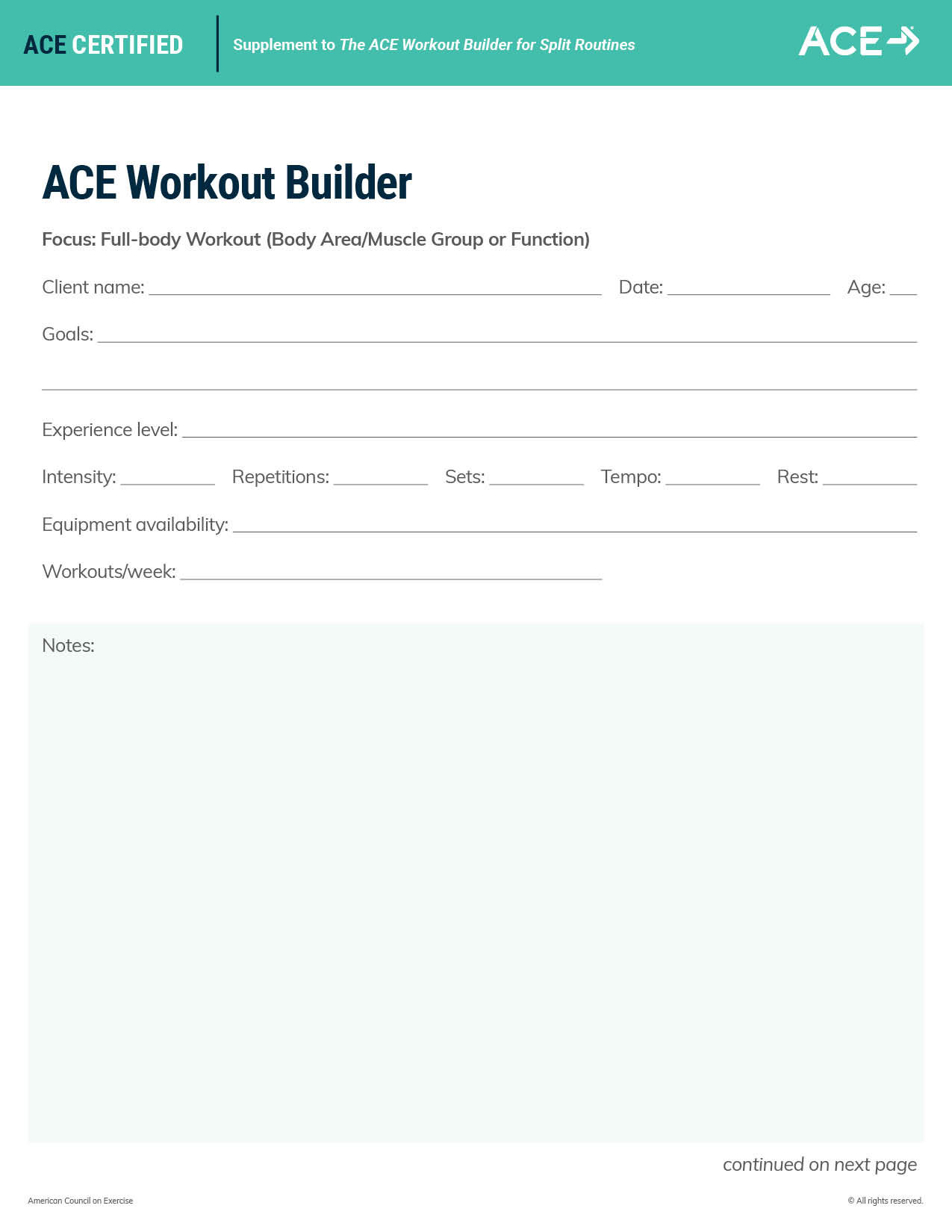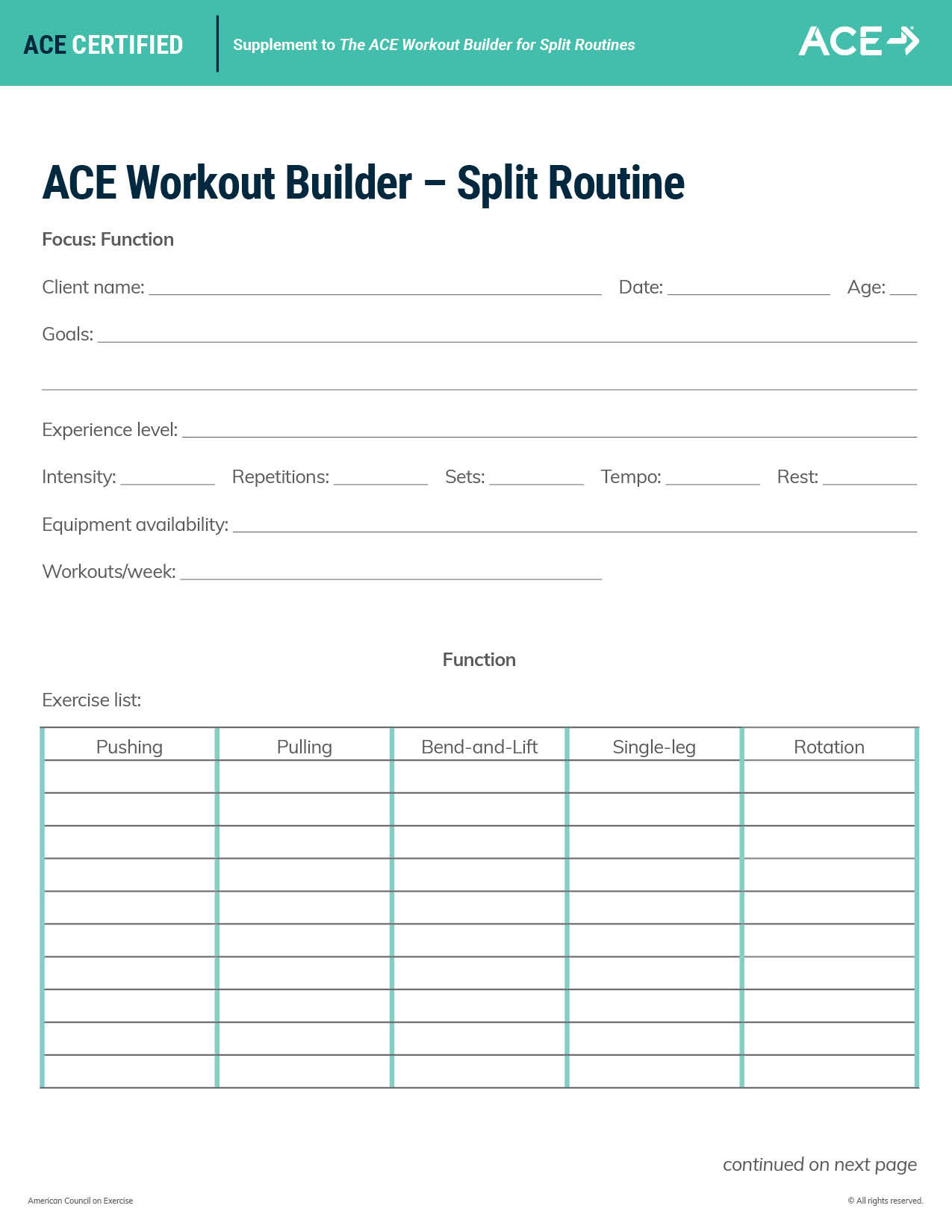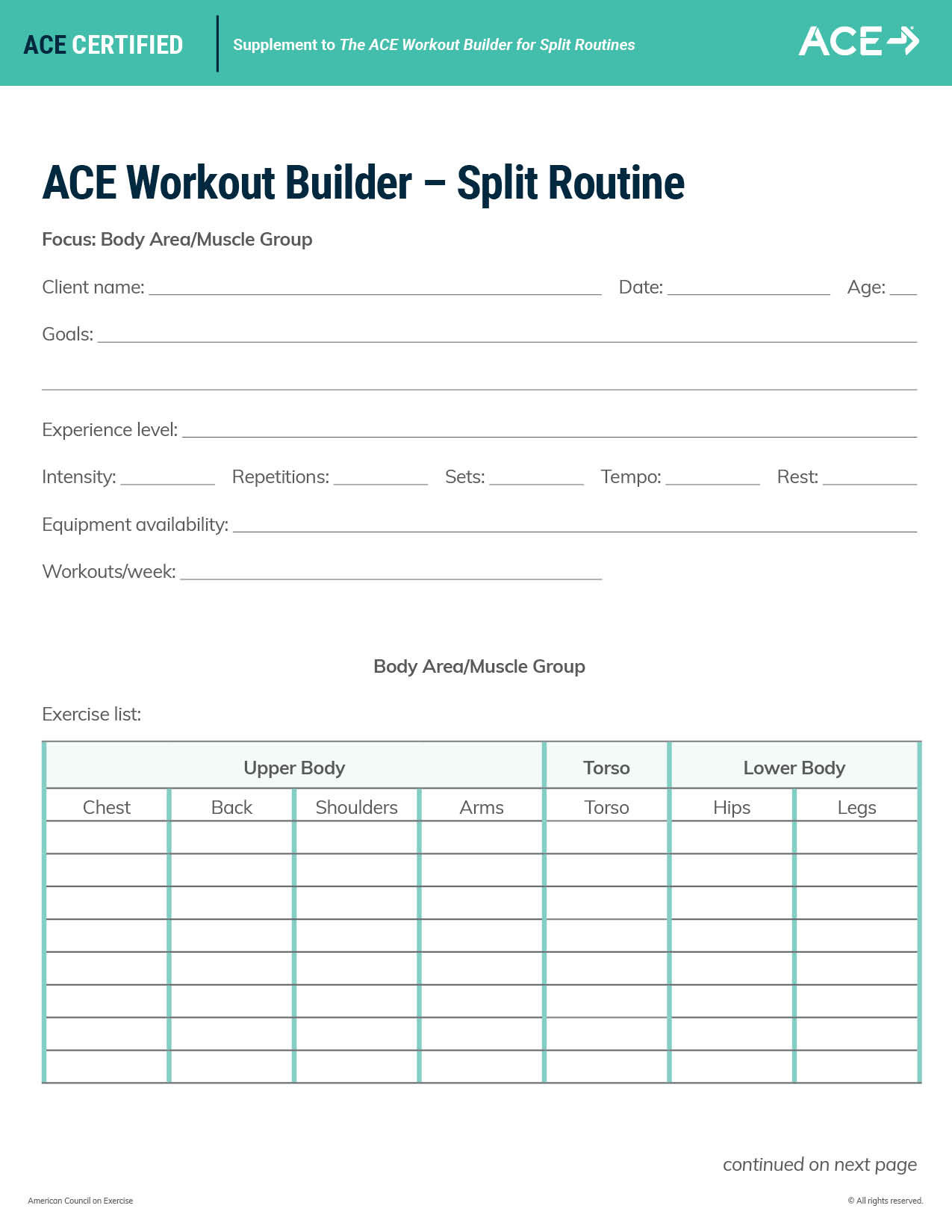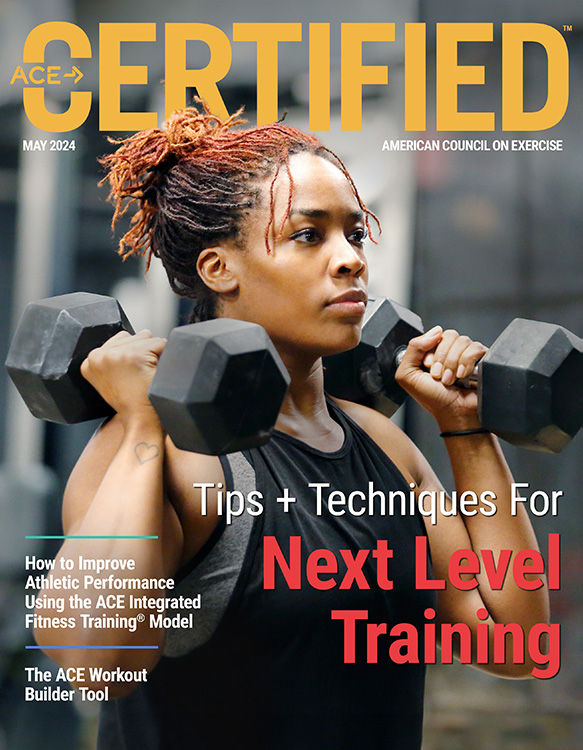
The ACE Workout Builder for Split Routines

The first step in developing a workout regimen for any client is to understand some key variables, including their goals, needs, experience level, abilities and equipment availability. Weaving all of these considerations into a client’s program can be challenging, so we designed the ACE Workout Builder to simplify this process for you.
As you learned in Mastering the Art of the Split Routine (and if you haven’t yet read it, be sure to check it out), split routines are a great way to add challenge, variety and training volume for a client who has been consistently performing full-body resistance-training workouts multiple days per week and is ready to devote more time to their training. This article walks you step by step through the process of identifying the number of sets and repetitions a client should perform, choosing exercises and building personalized workouts for each client.
Training Variables
The summary of training variables presented in Table 1 can be used to choose the intensity, sets, repetitions, tempo and rest intervals based on your clients’ goals and level of experience. For most clients, the general muscular fitness row will be appropriate, though adjustments should be made based on their training experience (e.g., experienced clients can safely use higher levels of resistance and perform additional sets, if doing so aligns with their goals) or if they have specific goals involving muscular hypertrophy or power, for example.
Table 1. Training Variables
|
Resistance Training Goal/Experience |
Intensity |
Repetitions |
Sets |
Tempo |
Rest |
|
General Muscular Fitness |
20–70% 1-RM |
8–15 |
1–4 |
~6 seconds |
2–3 min |
|
Muscular Endurance |
≤67% 1-RM |
≥12 |
2–3 |
≤30 sec |
|
|
Muscular Hypertrophy |
67–85% 1-RM |
6–12 |
3–6 |
30–90 sec |
|
|
Muscular Strength |
≥85% 1-RM |
≤6 |
2–6 |
2–5 min |
|
|
Power
|
Single effort: 80–90% 1-RM Multiple effort: 75–85% 1-RM |
Single effort: 1-2 Multiple effort: 3–5 |
3–5 |
2–5 min |
|
|
Novice/Intermediate |
60–70% 1-RM (moderate-to-vigorous) |
8–25 |
1–4 |
2–3 min |
|
|
Experienced |
Gradually increase to ≥80% 1-RM (vigorous-to-very-vigorous intensity) to improve strength |
8–25 |
2–4 |
2–3 min |
|
|
Sedentary/Older Adult |
40–50% 1-RM (very-light-to-light intensity) to improve strength |
10–15 |
1–4 |
2–3 min |
Note: 1-RM = One-repetition maximum
The next step is to determine how much weight a client should be lifting, based on the range of one-repetition maximum (1-RM) percentages given in Table 1. You don’t have to ask clients to perform a 1-RM assessment to figure this out. Instead, use this weight training load calculator to identify an appropriate load. For example, if you have a client who has been performing three sets of 12 repetitions of the chest press exercise with 75 pounds, that is roughly 67% of their 1-RM of 112 pounds. You can use that value to determine the appropriate load for that exercise.
Next, it’s time to choose the exercises you will include in the client’s workouts. To determine this, ask your client where they will be performing each of their workouts and, if outside the gym, what type of equipment they have available. In the ACE Exercise Library, in addition to “Exercises by Body Part” and “Exercises by Experience,” you’ll find a collection of “Exercises by Equipment.” Options include everything from dumbbells and barbells to stability balls and resistance bands. There is even a section for clients who have no equipment at all.
Consider this example: Your client is planning to perform four workouts per week, two with you in the gym and two at home, and has chosen to split their routine into upper- and lower-body workouts. In this case, you might choose to have them perform their upper-body workouts at the gym, where they will have a wide variety of equipment options, and their two lower-body workouts at home, where they have only a few pairs of light dumbbells. For those at-home workouts, you can look through the “dumbbell” and “no equipment” sections of the ACE Exercise Library to choose lower-body exercises for this client.

 .
. 
Final Thoughts
Muscular training is an important component of a healthy lifestyle and offers many benefits, including stronger muscles, the ability to burn more calories while at rest, enhanced disease prevention and a lower risk of injury. While these benefits can be realized by doing muscle-strengthening activity on at least two days per week, you can empower your clients to achieve greater fitness by tailoring a split-routine resistance-training program design to their specific needs and goals.
Split routines may provide an added boost to your clients’ physical-activity schedule by increasing the total volume of work completed by each major muscle group. When incorporating split-routine training into your clients’ workout programs, don’t forget to be mindful of other training principles, such as progression, specificity, overload, supersets, compound sets, exercise order and equipment selection, to create a well-rounded and progressive exercise program.





 by
by 

